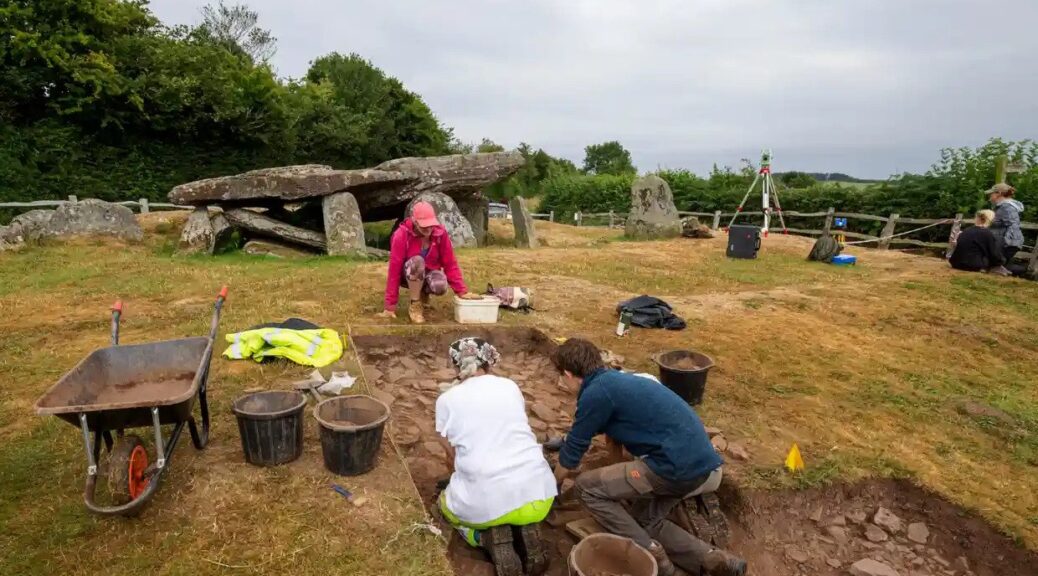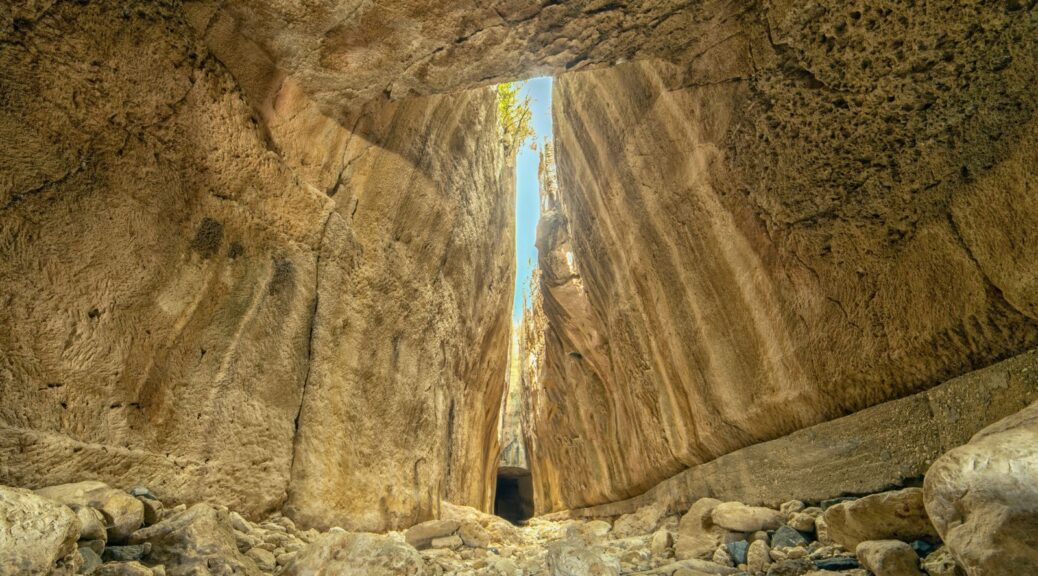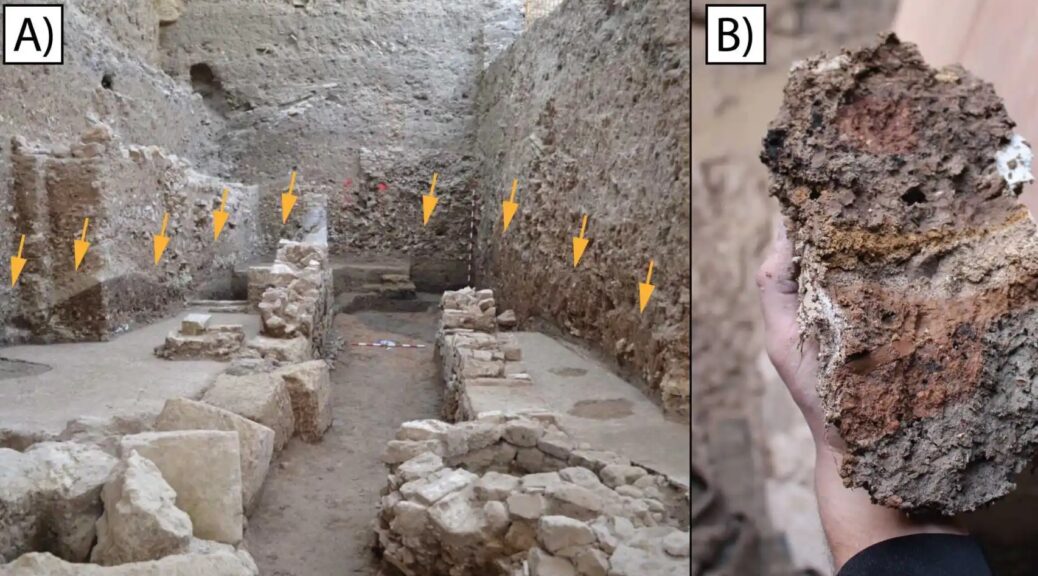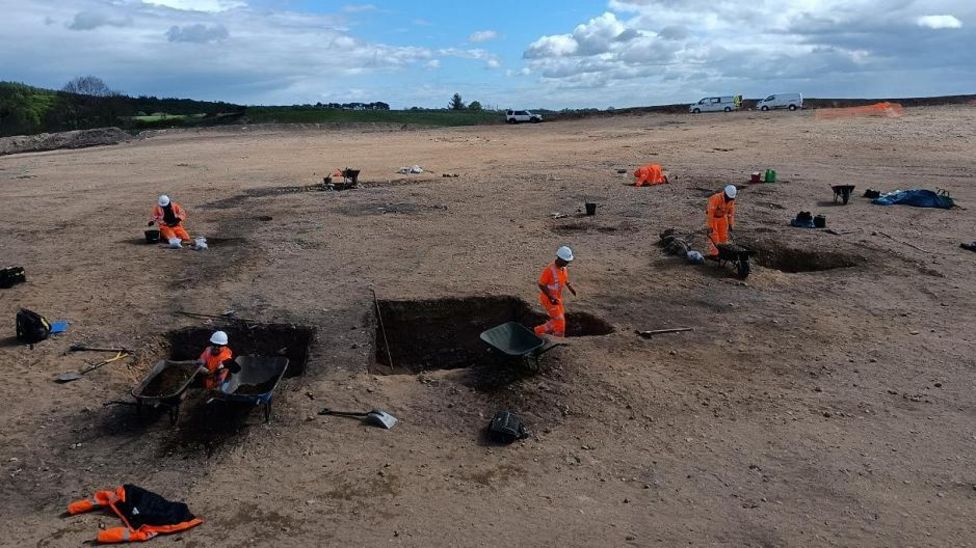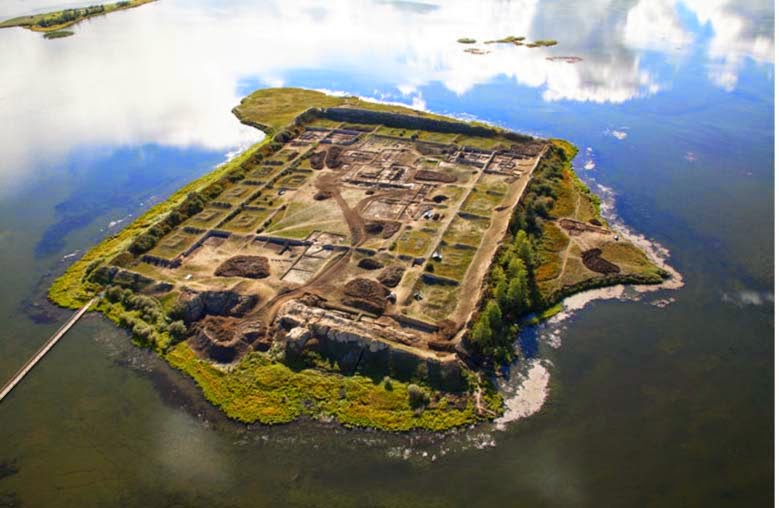Neolithic Tomb Linked to King Arthur Investigated in England
High above one of western Britain’s loveliest valleys, the silence is broken by the sound of gentle digging, scraping and brushing, along with bursts of excited chatter as another ancient feature is revealed or a curious visitor stops by to find out what is going on.

This summer archaeologists have been granted rare permission to excavate part of the Arthur’s Stone site, a neolithic burial plot with soaring views across the Golden Valley in Herefordshire and the Black Mountains of south-east Wales.
Using their version of keyhole surgery, the archaeologists unearthed features, including what appear to be stone steps leading up to the 5,000-year-old tomb, and tools used by the first people to farm this landscape.
The 25-strong team have launched drones that have pinpointed possible sites of several other ancient burial spots nearby, all of which are leading them to surmise that Arthur’s Stone – like the circles at Stonehenge and Avebury – was an important meeting place and possibly part of a much larger complex of inter-related monuments.

“Arthur’s Stone is one of the most wonderful ancient monuments in the care of the nation but it’s been very poorly understood,” said Julian Thomas, a professor of archaeology at the University of Manchester, who is leading the dig. “We’re trying to do justice to it, put it in the context of what was happening in the very early neolithic.”
Over the centuries the site has inspired storytellers as well as archaeologists and historians. King Arthur was said to have killed a giant on the spot; indentations on the surface of the tomb’s capstone were supposedly made by the creature’s elbows as it fell backwards.
In the 20th century, CS Lewis is said to have used the monument as the inspiration for the stone table on which Aslan is sacrificed in The Lion, the Witch and the Wardrobe.
Thomas said the true story emerging was of a monument developed over many decades or centuries in the very early neolithic period by the first farmers and last hunter-gatherers.
He said it was becoming clear that it was almost certainly connected to two other nearby sites, Dorstone Hill, where prehistoric halls were burned and incorporated into burial mounds, and a long barrow at Cross Lodge.

The site also seems oriented towards a mountain on the horizon across the border in Wales called the Skirrid, another place steeped in myth and legend, where a landslide was said to have been caused by an earthquake or lightning strike at the moment of the crucifixion of Jesus Christ.
Keith Ray, an honorary professor of archaeology at Cardiff University, who is also overseeing the digging, said he had been asking people to look afresh at the Skirrid and imagine what it may have meant to ancient people. “I’ve thrown out one idea, it’s a bit wacky, but could it have looked like a mammoth to them and reminded them of this giant creature that used to roam here.”
Visitors have flocked to the dig from near and far. Ben Hughes, a musician based in Cardiff, said he found the site “strange, weird, wonderful, fascinating”. He said: “For me it feels like an in-between sort of place, with the more gentle landscape behind and the mountains over there. I can see why people have met here for centuries.”
Pam Thom-Rowe, an English Heritage volunteer guide, said visitors from as far away as Texas had been on site. “To me it feels like the monument is putting feelers out on the landscape.”

Such is the excitement at what is being found – and the public response – that the chief executive of English Heritage, Kate Mavor, is paying a visit on Friday. She said new archaeology and research continued to find fresh stories.
“Exploring a site like Arthur’s Stone is a fascinating process and something we wanted to open up to the public,” she said. “We’ve had a great response.”
Keeping an eye on the dig was Win Scutt, a properties curator at English Heritage. He said it was rare for permission to be given for this type of exploration within a scheduled monument. “This is very delicate, targeted keyhole sampling to try to answer specific questions,” he said.
Scutt said ideas about what the site was all about had changed immensely over the past few weeks – making the details on the English Heritage interpretation board out of date. “But I won’t be in too much of a rush to change it. The story will be different next year and the year after that. Which is the very exciting thing.”
